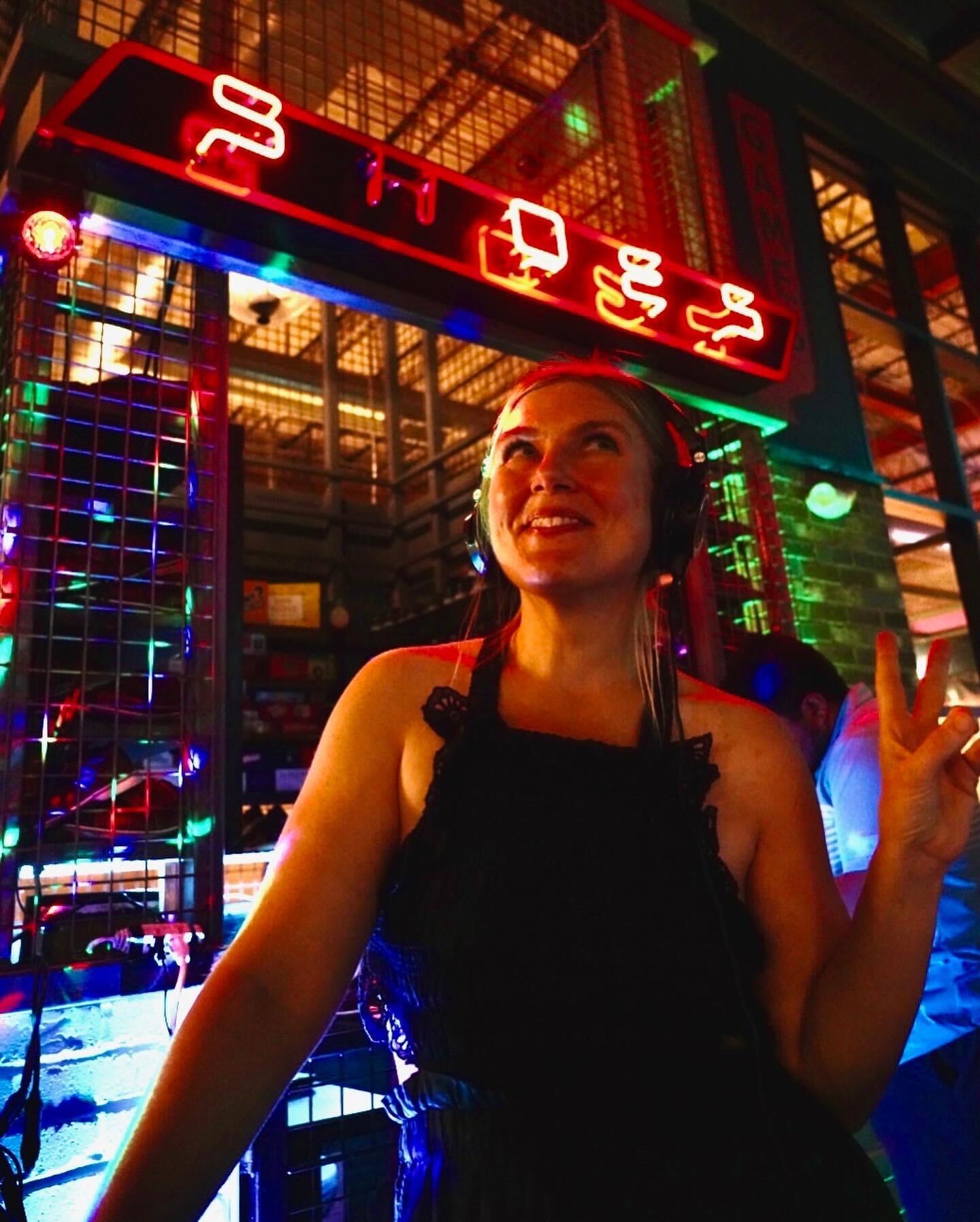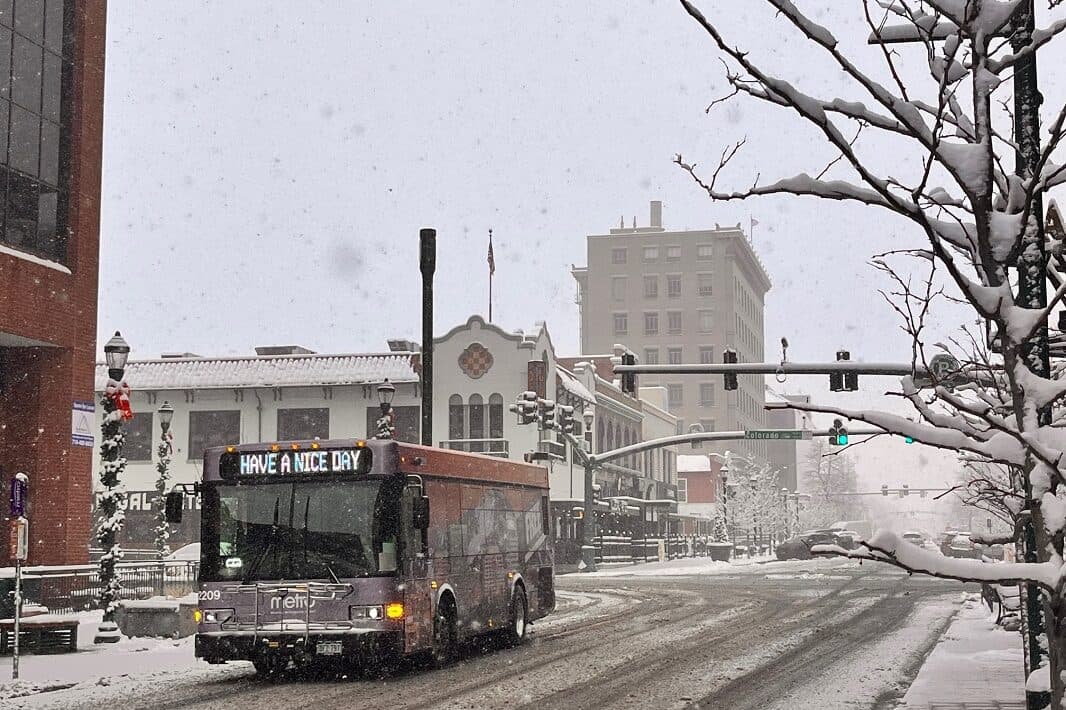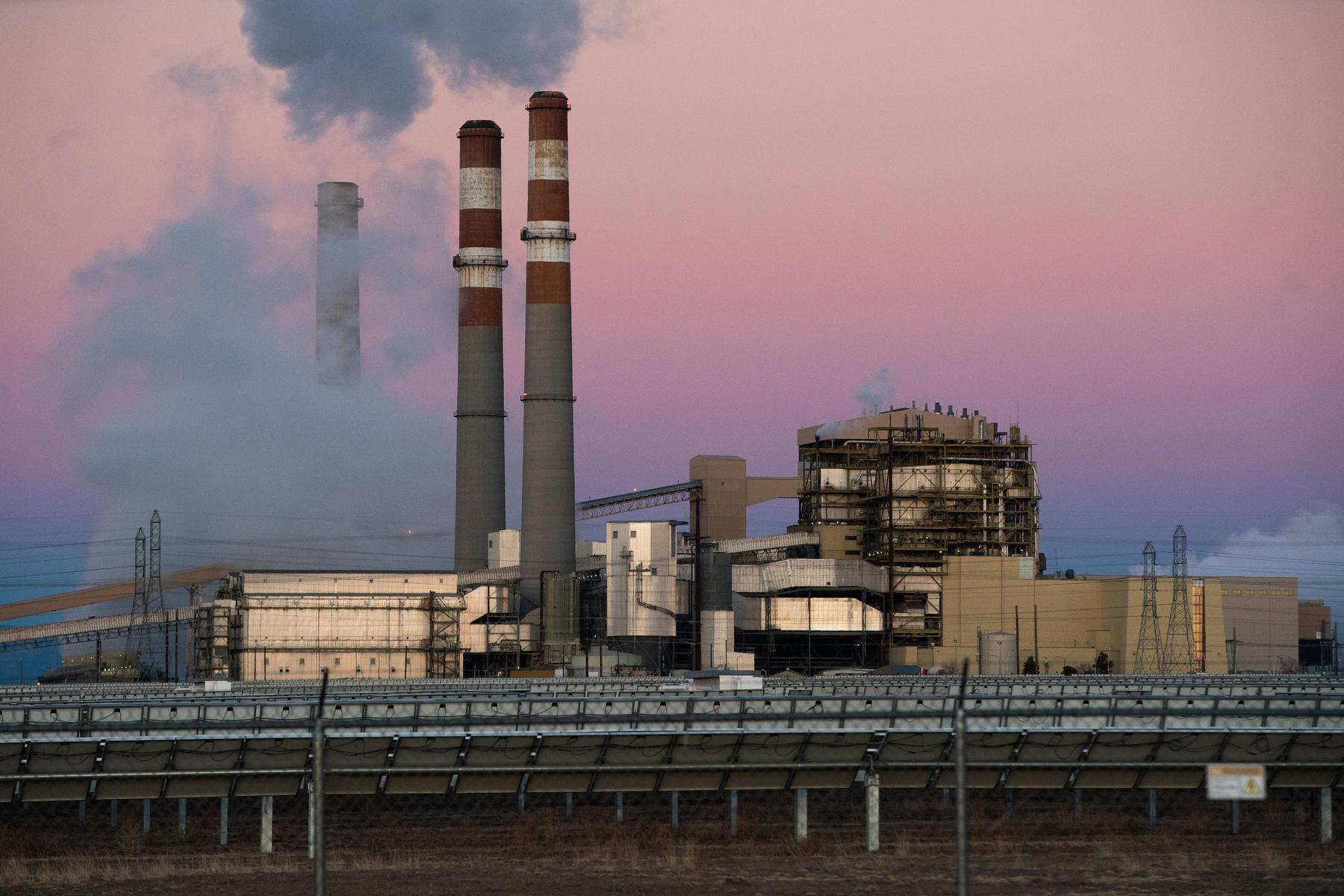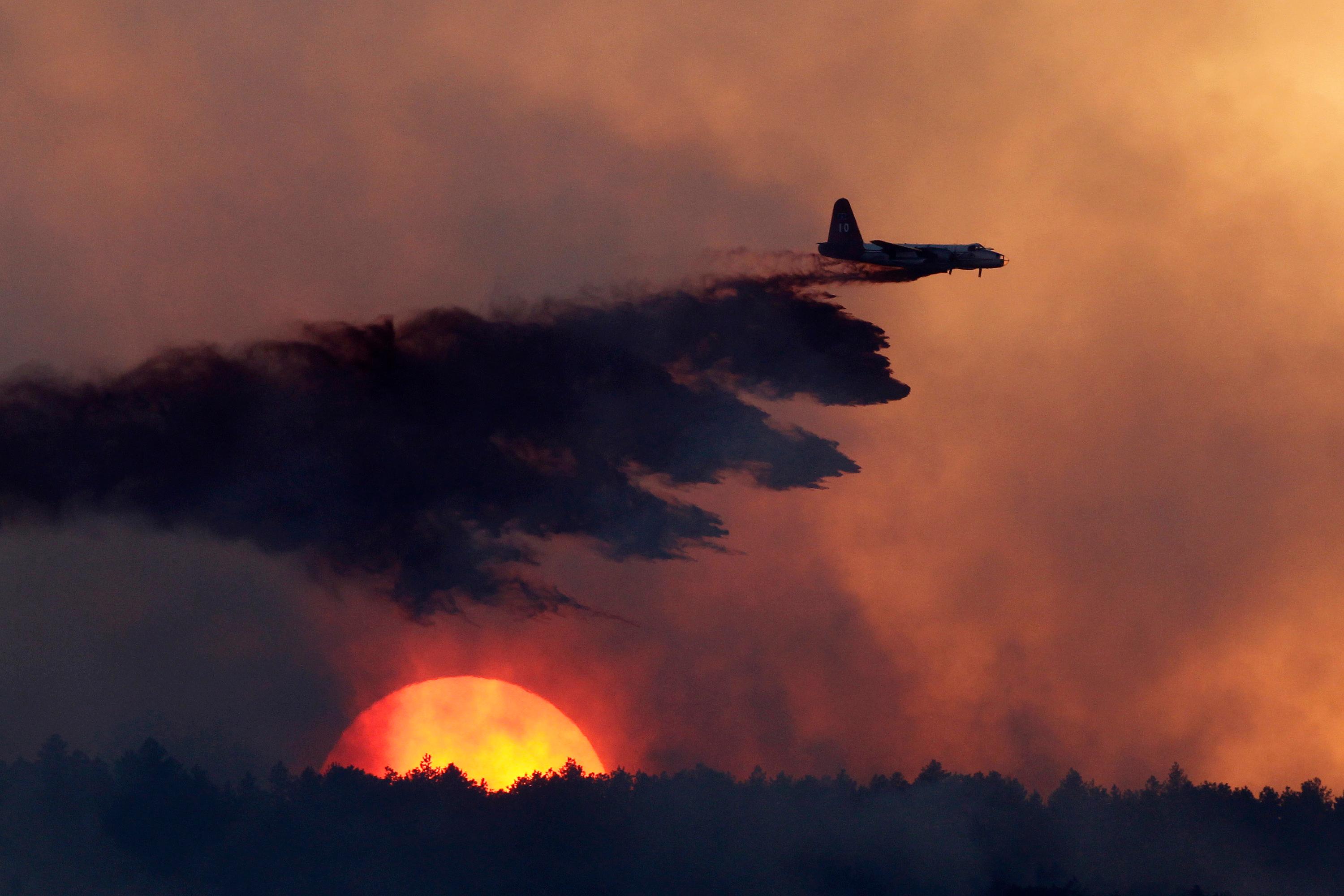
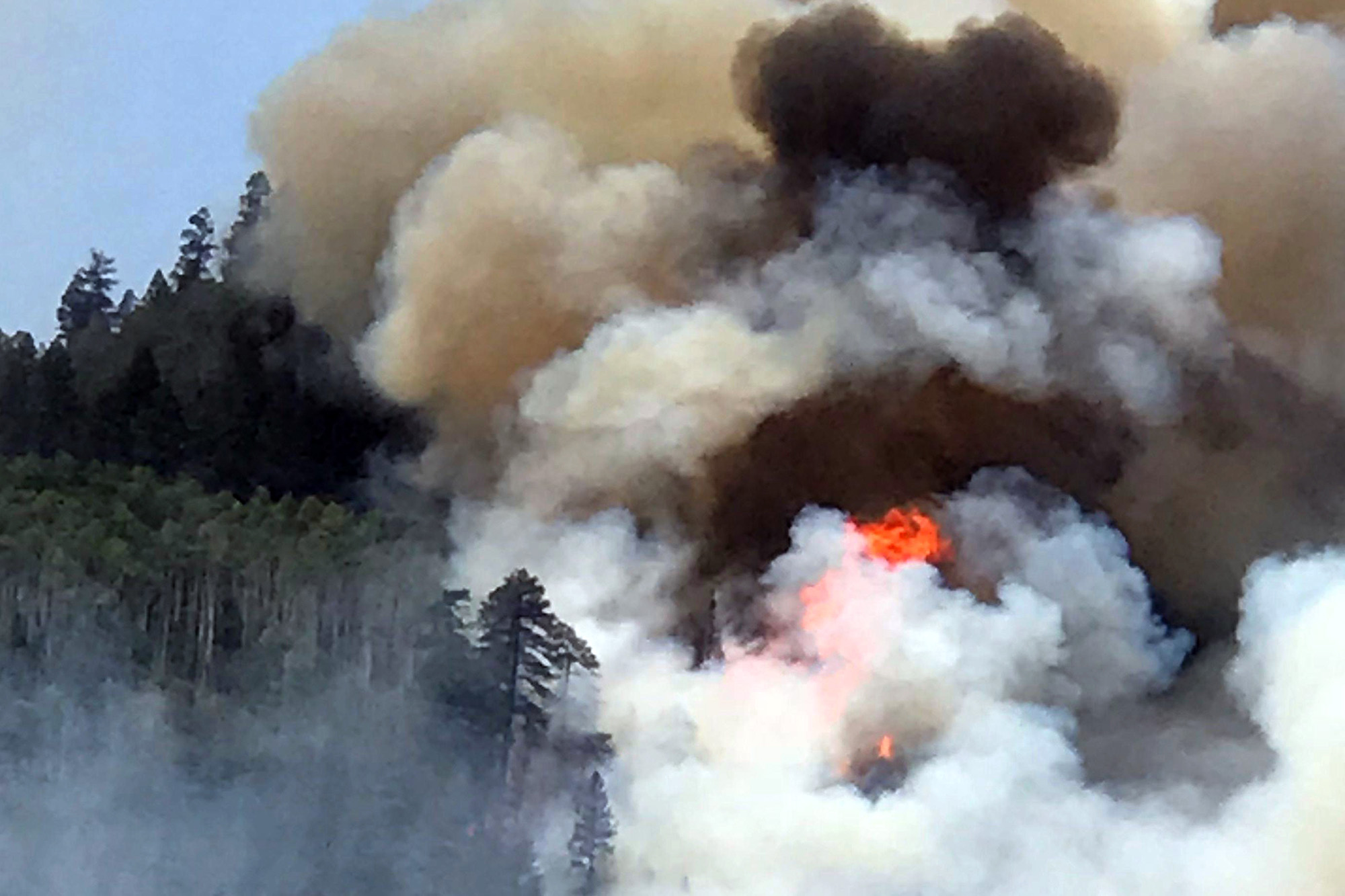
Can you see it? Smell it? Maybe even taste it? Wildfire smoke blanketed large portions of Colorado Thursday.
Useful Links
- Fires: 416 | Burro | Buffalo | Bocco | Badger Creek| Horse Park | Natty
- What To Do If You Get An Evacuation Notice
- Department of Public Health and Environment Smoke Monitor
- EPA’s Air Quality Guide and Forecast Map
In the Denver area, some of that haze comes from Jefferson County, where a small wildfire started near Genessee Thursday morning. That blaze is reported to be under control, but Scott Landes with the state's Meteorology and Prescribed Fire Unit, says the Colorado's largest fire is also causing its worst smoke.
“I would say the worst air quality right now is certainly in Southwest Colorado near the 416 fire,” Landes said. “Especially in the Durango area we’ve seen almost two weeks now of really poor air quality.”
The EPA’s air quality monitoring shows a large swath of Colorado with moderate air quality, but very unhealthy to hazardous air quality in the southwest part of the state related to the 416 and Burro fires.
Who's at risk: People in the Durango area are being advised to stay indoors to protect their respiratory health. Colorado Department of Public Health and Environment reminds that “If visibility is less than 5 miles in smoke in your neighborhood, smoke has reached levels that are unhealthy,” and that “if smoke is thick or becomes thick in your neighborhood you may want to remain indoors. This is especially true for those with heart disease, respiratory illnesses, the very young, and the elderly. Consider limiting outdoor activity when moderate to heavy smoke is present. Consider relocating temporarily if smoke is present indoors and is making you ill. If visibility is less than 5 miles in smoke in your neighborhood, smoke has reached levels that are unhealthy.”
Where there's risk: CDPHE has issued an air quality advisory through Friday morning for portions of southwestern and south-central Colorado, including La Plata, San Juan, Hinsdale, Mineral, Archuleta, Rio Grande, Saguache, Alamosa, Conejos, Costilla, northeastern Montezuma and eastern Dolores Counties. Locations include, but are not limited to, Durango, Rockwood, Hermosa, Silverton, Lake City, Pagosa Springs, South Fork, Creede, Del Norte, Saguache, Alamosa, Conejos, San Luis, Dolores, and the Southern Ute Reservation.
The 416 wildfire burning north of Durango is doing more than fouling the air -- it’s pinching the local economy there. The Four Corners region is already in the throes of drought and the 43-square-mile 416 Fire isn’t helping. Conditions and the blaze have forced the closure of the recreation-rich San Juan National Forest.

